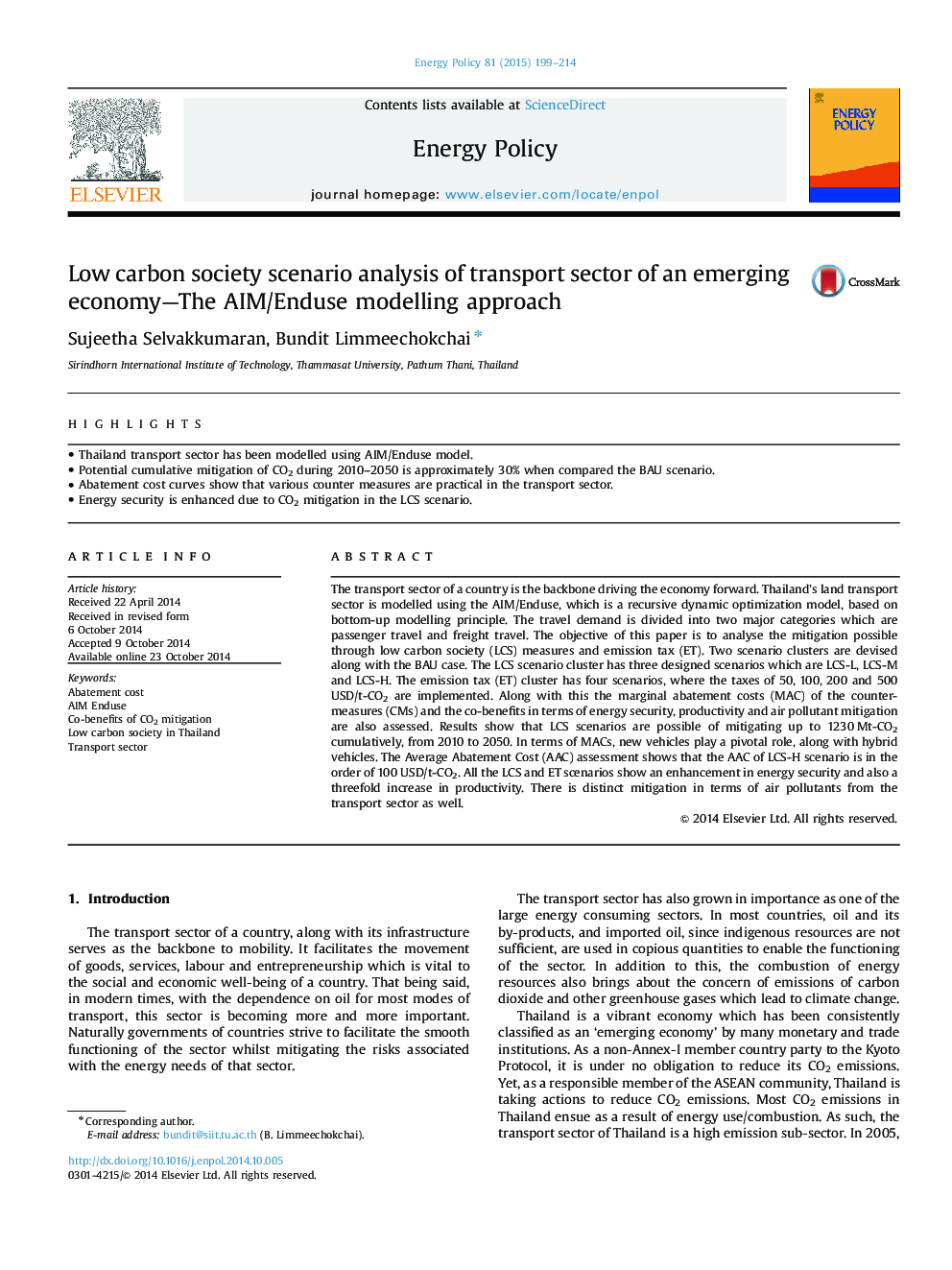| Article ID | Journal | Published Year | Pages | File Type |
|---|---|---|---|---|
| 992838 | Energy Policy | 2015 | 16 Pages |
•Thailand transport sector has been modelled using AIM/Enduse model.•Potential cumulative mitigation of CO2 during 2010–2050 is approximately 30% when compared the BAU scenario.•Abatement cost curves show that various counter measures are practical in the transport sector.•Energy security is enhanced due to CO2 mitigation in the LCS scenario.
The transport sector of a country is the backbone driving the economy forward. Thailand’s land transport sector is modelled using the AIM/Enduse, which is a recursive dynamic optimization model, based on bottom-up modelling principle. The travel demand is divided into two major categories which are passenger travel and freight travel. The objective of this paper is to analyse the mitigation possible through low carbon society (LCS) measures and emission tax (ET). Two scenario clusters are devised along with the BAU case. The LCS scenario cluster has three designed scenarios which are LCS-L, LCS-M and LCS-H. The emission tax (ET) cluster has four scenarios, where the taxes of 50, 100, 200 and 500 USD/t-CO2 are implemented. Along with this the marginal abatement costs (MAC) of the counter-measures (CMs) and the co-benefits in terms of energy security, productivity and air pollutant mitigation are also assessed. Results show that LCS scenarios are possible of mitigating up to 1230 Mt-CO2 cumulatively, from 2010 to 2050. In terms of MACs, new vehicles play a pivotal role, along with hybrid vehicles. The Average Abatement Cost (AAC) assessment shows that the AAC of LCS-H scenario is in the order of 100 USD/t-CO2. All the LCS and ET scenarios show an enhancement in energy security and also a threefold increase in productivity. There is distinct mitigation in terms of air pollutants from the transport sector as well.
